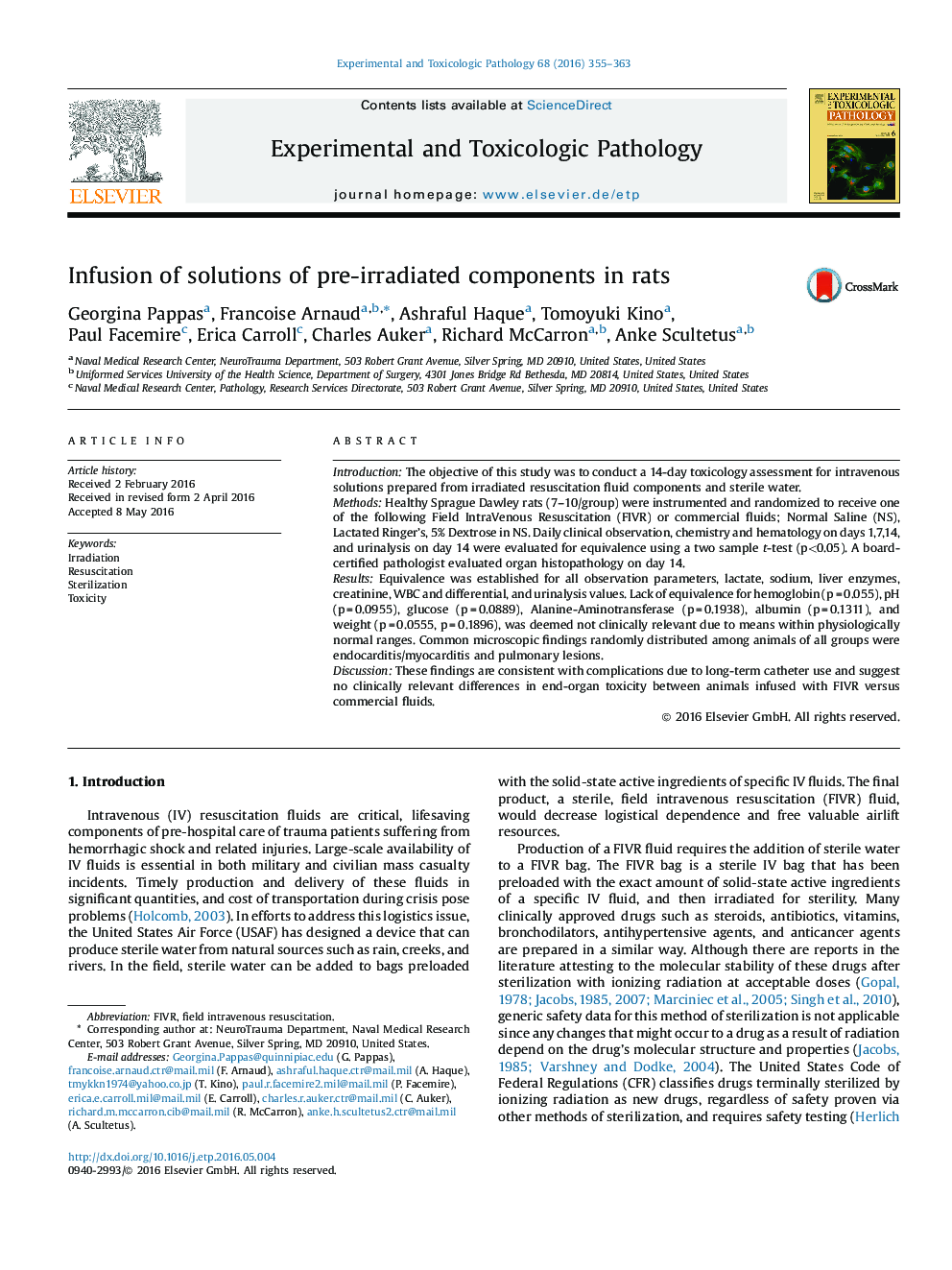| Article ID | Journal | Published Year | Pages | File Type |
|---|---|---|---|---|
| 2498785 | Experimental and Toxicologic Pathology | 2016 | 9 Pages |
IntroductionThe objective of this study was to conduct a 14-day toxicology assessment for intravenous solutions prepared from irradiated resuscitation fluid components and sterile water.MethodsHealthy Sprague Dawley rats (7–10/group) were instrumented and randomized to receive one of the following Field IntraVenous Resuscitation (FIVR) or commercial fluids; Normal Saline (NS), Lactated Ringer’s, 5% Dextrose in NS. Daily clinical observation, chemistry and hematology on days 1,7,14, and urinalysis on day 14 were evaluated for equivalence using a two sample t-test (p<0.05). A board-certified pathologist evaluated organ histopathology on day 14.ResultsEquivalence was established for all observation parameters, lactate, sodium, liver enzymes, creatinine, WBC and differential, and urinalysis values. Lack of equivalence for hemoglobin (p = 0.055), pH (p = 0.0955), glucose (p = 0.0889), Alanine-Aminotransferase (p = 0.1938), albumin (p = 0.1311), and weight (p = 0.0555, p = 0.1896), was deemed not clinically relevant due to means within physiologically normal ranges. Common microscopic findings randomly distributed among animals of all groups were endocarditis/myocarditis and pulmonary lesions.DiscussionThese findings are consistent with complications due to long-term catheter use and suggest no clinically relevant differences in end-organ toxicity between animals infused with FIVR versus commercial fluids.
